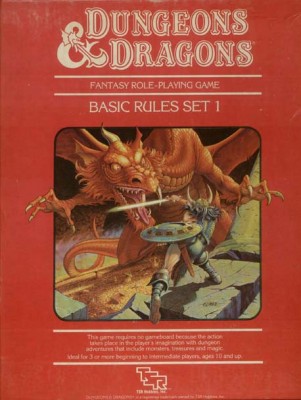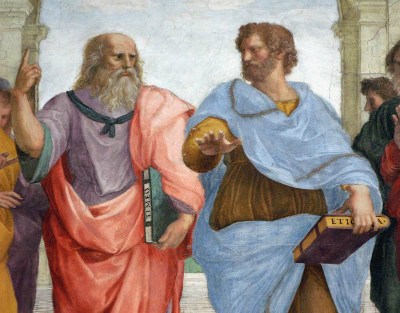 In the world of tabletop gaming, the person running the game, the mastermind behind the screen, is referred to by a number of different appellations. The most common titles by far are that of Game Master, or in D&D parlance, Dungeon Master. Other games use more flavorful titles such as Narrator or Director.
In the world of tabletop gaming, the person running the game, the mastermind behind the screen, is referred to by a number of different appellations. The most common titles by far are that of Game Master, or in D&D parlance, Dungeon Master. Other games use more flavorful titles such as Narrator or Director.
My favorite title, though, and the one to which I most closely associate, is Storyteller.
There are a number of philosophies behind running games. For many, every session is the “Dungeon of the Week”, a series of episodic adventures that are, ultimately, unrelated. The only common link from one game session to the next are the player characters. For others, these sessions will occasionally have some commonality, interspersed with one-off adventures, and the pace of the game will feel very much like a 90’s sitcom: there’s a plot to every season, but it by no means affects every individual episode.

Joey in “The One Where Everyone Dies to a Mind Flayer”
For me, a game is a story that, from the beginning to the end, is told in cooperation with the players. I decide upon a plot before I ever sit down to run the game. The details, the elements that make up every individual game session, of course, are largely in the hands of the players, but the events that unfold around them are always a part of the larger tale. It brings more meaning to every game, draws the players in more to that world, and makes them feel invested and involved in the story itself. The excitement of finding new loot or earning experience points becomes secondary to the excitement of solving a mystery or helping a recurring NPC. As the one running the game, you have become a Storyteller; the dice, maps, and monsters are your tools, but only insomuch as they advance the story you are telling.
Running a game according to this formula, however, does lead to one inevitable conclusion: stories end. At some point, when the final plot has been resolved, it will be time for the players to say goodbye to their characters and the world you have made for them. It is the final task, and, in my experience, the greatest challenge for a Storyteller, to wrap up a game in a way that is meaningful, giving the story the ending that the players have worked with you to create. It is here, at the end, that the players may finally see the impact that their characters have had on the game world, and hopefully walk away from the table happy with the story that they were a part of.
The Pitch
I recently had the good fortune of running a game of Amber DRPG (if you’re unfamiliar with it, there’s a fantastic review of it here), and it was easily one the most frustrating, wonderful, and rewarding experiences I have had in Storytelling. As a purely narrative game, it’s uniquely difficult to run for a group of players, each of whom has a monumental amount of leeway with what they can and who they want to be within the game world. Add to this that I decided to challenge myself further by running the game for a dozen people at once, the vast majority of which were new to world of Amber, and the game took on a dynamic that kept me pushing the limits of my skills every session.
 From the beginning, I knew the kind of story I wanted to unfold for the players. The setting that I chose offered me a unique opportunity to illustrate themes and motifs that would have otherwise been impossible to capture. Those themes that were, to say the least, unorthodox and ambitious.
From the beginning, I knew the kind of story I wanted to unfold for the players. The setting that I chose offered me a unique opportunity to illustrate themes and motifs that would have otherwise been impossible to capture. Those themes that were, to say the least, unorthodox and ambitious.
I wanted to dare my players to view the world – the real world – with a new light, and to teach them this point of view through the metaphor of the game world I created. And so, with five major story arcs in mind that would culminate with the climactic final confrontation against an existential threat, I welcomed my twelve bright-eyed players into a wide and chaotic world.
The theme I had created for the game was higher-dimensional thinking. That is, we see the universe as just a single dimension, of which there is an infinite number which we cannot perceive. Within the world of Amber though, players are multi-dimensional deific beings, capable of moving between realities as they see fit. Towering above the players were three godlike beings that had created all the realities that the characters could perceive, and one of these entities desired to see all of these many realities destroyed forever. The reason behind this was, in fact, that the universe as the players knew it was created with the intent of being destroyed. The god-beings who created the universe wanted the inhabitants within it, including the player characters, to realize that there were higher dimensions above them, and to transcend to those higher dimensions in a moment of perception-based apotheosis.
Simple enough, right? As I said: unorthodox and ambitious. But I told myself it was possible, and as it turned out, the players made it so in a way that I had not expected.
The Plot Thickens
It began, as all things do, rather small. The first several game sessions, comprising the first story arc, were there to help the players feel out their characters, the universe of Amber, and to solidify their relationships with the other players and the host of NPCs I had created to help populate the game. It was also here that I began to sow the first tiny seeds of the greater threat that I would spring upon them later in the game. In these early meetings, I had players laughing, shouting, planning, and wondering how to deal with the challenges I laid out before them. I presented them with moral questions, ample opportunities for betrayal, and narrative challenges that many had not experienced before in their gaming careers.
In that first arc, I learned limits. I presented players with tests that I knew would make them think. I had players ask me to cut their scenes short and move on to other players, just so they had time to wrap their heads around the scenarios provided to them. For example, I had one player have to stop and wonder what they should say to their character’s father during one tense scene. “I’ve never had a roleplay like this before,” he told me. At the conclusion of that first part of the story, I accomplished things I never had before as a Storyteller, and it was immensely rewarding.
The game progressed, running on a (roughly) bi-weekly schedule for almost a year. At points my players despaired that the villains were too clever, grew angry with me over perceived unfairness, laughed, cried, and displayed all sorts of emotions that I had never elicited from players before. Some of my players were more frustrated than others, but I never stopped pushing them. I dared them to be a part of the story that was unfolding before them, to make choices and make a difference in the world that I had created for them. Even the angriest of my players conceded that they had seen scenes in the game that they thought were incredible, and that alone was enough to let me know I was on the right track, even when I felt the game was constantly riding on the edge of disaster.
All Good Things…
The end came suddenly, and much sooner than I had anticipated.
 I had planned for the game to run through five story arcs, but as it happened, the fifth arc was not to be. During the epic conclusion of the fourth story arc, the players made a fateful decision that led to the end of everything that they had been fighting to save. In a very real way, the villains had won.
I had planned for the game to run through five story arcs, but as it happened, the fifth arc was not to be. During the epic conclusion of the fourth story arc, the players made a fateful decision that led to the end of everything that they had been fighting to save. In a very real way, the villains had won.
I was honestly shocked that it had occurred. I had foreseen and planned for many outcomes at the end of that fourth arc, but the sudden victory of the antagonists was not one of them. I ended that particular session right then and there, telling the players that I needed time to think on what had just happened and in what direction they had just taken the story.
At first, I was frustrated. It was easy to blame the players for what, at first glance, seemed to be a failure on their part. The more I thought on the topic, however, the more I realized that what had occurred was all right. It was a choice that the players had made, and the Story belonged as much to them as it did to me. If I simply marched on, determined to see the ending that I had first envisioned, I would have cheapened the decisions of the players. Railroading of that sort was a sin that I was determined not to commit from the very beginning of the game.
 So I stepped back. I looked at the big picture, at the theme of the game, and at the lessons I had been trying to teach with the game since its inception. I realized, in a moment of cathartic clarity, a truth that was unmercifully beautiful: the players had brought themselves to a point where those lessons could be better illustrated now than I could have ever done on my own. Galvanized, and with a renewed fervor, I went into what would be the final game session knowing that the villains had won, and that it was okay. The universe ended, exactly as it was meant to, and the players’ characters had to realize that they could survive it.
So I stepped back. I looked at the big picture, at the theme of the game, and at the lessons I had been trying to teach with the game since its inception. I realized, in a moment of cathartic clarity, a truth that was unmercifully beautiful: the players had brought themselves to a point where those lessons could be better illustrated now than I could have ever done on my own. Galvanized, and with a renewed fervor, I went into what would be the final game session knowing that the villains had won, and that it was okay. The universe ended, exactly as it was meant to, and the players’ characters had to realize that they could survive it.
During that last game session, I pulled each player aside and presented to them a small vignette in which it was determined whether or not the character survived, whether or not they had grasped the theme of the game and learned to think of higher dimensions as something that was attainable. Some characters made it; some did not. It was a tense and terrifying moment for me as a Storyteller. I was ending the game early, under unusual circumstances, and I was asking my players to realize a concept that I had planned to spend another story arc explaining. Finally, when every private vignette was finished, I sat all the players down and explained to them that the game was over, and why it had ended.
They loved it. At least two of them cried. It was humbling in a way I could not describe.
The story that we had all created had come to an ending that was meaningful, that resonated with the players, and, most importantly, that they had chosen for themselves. It was their ending as much as was mine. The Story was concluded, to everyone’s satisfaction, including my own. The final plot had been resolved, and it was time for everyone to say goodbye to their characters and to the world we had all created together. In a way, it was the perfect ending – the kind of ending that every Storyteller strives for, but so few of us are lucky enough to see.
Not everyone lived happily ever after, but that’s a boring ending to a story anyway.
Brandon Yanuskevich presents his first guest contribution here. He is an advocate of the Mtg Commander format, LARPing, and any game with a richly thematic setting, but his biggest passion is as a tabletop Storyteller.
Let us know if you’d like to see more of his work via social media, or by contacting ryan@cardboardrepublic.com.
Photo Credits: Multiverse by John Gordy; Chess piece by katiesw1; Idea Moment by Rishi Bandopadhay.

